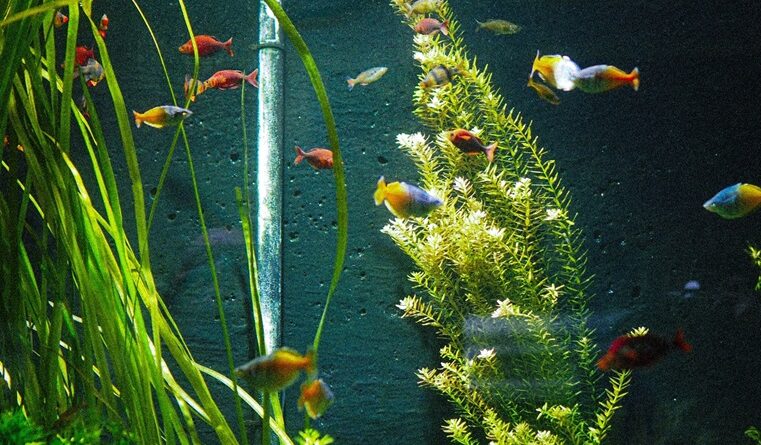Guide to Tank Substrate: Choosing the Right Bed for Your Aquarium and Adjusting pH
Setting up a successful aquarium involves more than just selecting the right fish and equipment. One crucial aspect that often goes overlooked is the choice of tank substrate. The substrate, or the material that lines the bottom of the aquarium, plays a vital role in the overall health and well-being of your aquatic ecosystem. From providing a foundation for plant growth to creating a natural environment for your fish, the substrate is an essential consideration. In this guide, we will explore the different types of tank substrates available, provide insights into choosing the right one for your aquarium, and discuss how to adjust pH using aquarium substrate.
Understanding the Importance of Tank Substrate
The tank substrate serves multiple purposes in your aquarium. It provides a medium for plant roots to anchor and grow, supports beneficial bacteria colonization, and adds aesthetic appeal to your tank. The substrate also plays a role in maintaining water quality by housing beneficial microorganisms that help break down waste products. Choosing the right substrate is crucial for creating a healthy and thriving aquatic environment.
Types of Tank Substrate
- Gravel: Gravel is one of the most common and versatile substrates used in aquariums. It comes in various sizes and colors, allowing you to create different aesthetics. Gravel is easy to clean and provides a suitable medium for plant growth. However, fine gravel may not be suitable for bottom-dwelling fish as it can trap debris.
- Sand: Sand is another popular substrate choice, especially for aquariums that house fish species that prefer a sandy environment. It is gentle on fish’s delicate fins and allows for natural burrowing behaviors. However, fine sand can compact easily and may require regular maintenance to prevent anaerobic pockets from forming.
- Substrate for Plants: If you plan to keep live plants in your aquarium, specialized substrates designed for plant growth may be a suitable option. These substrates are typically nutrient-rich and provide a conducive environment for plant roots to flourish. They may contain ingredients like clay, volcanic ash, or nutrient-enriched compounds.
- Soil-Based Substrates: Soil-based substrates are specifically designed for planted aquariums. These substrates typically consist of a nutrient-rich soil layer covered with a layer of gravel or sand. They provide a fertile medium for plant growth and help establish a balanced ecosystem.
Considerations for Choosing the Right Substrate
- Fish and Invertebrates: Consider the species of fish and invertebrates you plan to keep in your aquarium. Some fish, like bottom-dwellers or those with delicate barbels, may require a substrate that is gentle on their bodies. Invertebrates such as shrimp may prefer fine sand for burrowing.
- Plant Requirements: If you intend to keep live plants, choose a substrate that provides the necessary nutrients for their growth. Look for substrates specifically formulated for planted aquariums, as they often contain essential nutrients and minerals.
- Aesthetics: The substrate contributes to the overall visual appeal of your aquarium. Consider the color, texture, and size of the substrate to create the desired aesthetic effect. For example, a natural-themed aquarium may benefit from a substrate that mimics the appearance of a riverbed.
- Maintenance: Different substrates require varying levels of maintenance. Fine substrates may require more frequent cleaning to prevent debris buildup, while coarser substrates may be easier to maintain. Consider your time commitment and willingness to perform regular substrate maintenance.
Adjusting pH with Aquarium Substrate
Certain types of substrate can help adjust the pH of your aquarium water. For example, substrates containing crushed coral or limestone can increase the alkalinity and raise the pH level of acidic water. On the other hand, substrates like peat moss or driftwood can lower the pH level for fish that prefer more acidic conditions. It’s important to research the specific needs of your fish species and choose a substrate that aligns with their pH preferences.
When using substrate to adjust pH, it’s crucial to monitor the water parameters regularly. Test the pH level using a reliable aquarium test kit and make adjustments as necessary. Remember that pH stability is essential for the health and well-being of your fish, so gradual changes are recommended to avoid drastic fluctuations.
Conclusion
Choosing the right tank substrate is an important decision when setting up an aquarium. Consider the needs of your fish, plants, and overall aesthetic goals. Whether you opt for gravel, sand, specialized substrates, or soil-based options, ensure that it provides a healthy environment for your aquatic inhabitants. Additionally, understanding how certain substrates can affect pH levels allows you to create the optimal conditions for your fish species. With the right substrate and proper pH adjustments, you can create a visually appealing and thriving aquarium that will delight both you and your aquatic pets.



